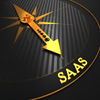6 Tips For Empowering Retail Organizations with Software as a Service

In 2015, software as a service (SaaS) disrupted organizations across the board by pushing traditional software solutions out of the way.
In Forrester Research's report "US Commerce Platform Technology and Services Forecast, 2014 to 2019," recent survey data reveals that 43 percent of U.S. retail, wholesale, and manufacturing firms have already transitioned from on-premises to SaaS commerce technology with a further 13 percent planning to complete this transition by the end of 2016. One key reason SaaS continued to triumph is by providing its users with the benefit of frequent upgrades.
Retailers that are used to the slower pace of traditional software that is hard to upgrade will need to adjust their planning to get the most out of SaaS. However, there are six tips retail organizations can follow to help guide their businesses through a successful SaaS strategy.
1. Start SaaS adoption with the areas that will have the largest impact on the business
When adopting SaaS, it is important for retailers to analyze their business needs to understand their top profit areas. Of all the features being released over the course of a year from your SaaS vendor, retailers should choose the two that will make the biggest impact on their top or bottom lines. As soon as key areas have been identified, align your teams on those priorities and get the features launched as close to the release date as possible to maximize their impact.
2. Do not rest on laurels; continue to make improvements with each update
Frequent software upgrades give organizations the power to constantly improve and meet the demands of clients that now expect instant results due to the continuous influence of digital technology in our everyday lives. Retailers must not let a bi-monthly upgrade go by without finding at least one minor feature that they like and can utilize to further benefit the company. For example, a new feature could be a button in the store interface that makes it faster for store employees to ship orders. By implementing the new button, a retailer could save five seconds on a task and free up resources over time.
3. Communication is key
Innovation can help retailers achieve unimaginable results, however, it is important to communicate to the organization and key stakeholders that an upgrade has been made in order for everyone to work on the same page. Not only does this keep them abreast of what your department is up to, it also lets them know if a change may impact them directly. It also demonstrates the benefits that pursuing continuous improvement through upgrades can bring to a retail business, which is a trait that is necessary to stay competitive with the breakneck speed of today's marketplace and customer demands.
4. Pay attention to vendor release notes
Remember back in grade school when the teacher made students complete a review sheet just before the big exam? Completing this review sheet made all the difference between a passing and failing grade. With SaaS, the same concept applies. The upgrade release notes tell retailers exactly what is coming down the line and what to expect. This step is crucial in planning. As soon as those release notes become available, take the time to grab a coffee, review them in detail and get to know what is coming up next. Not only will it help retailers think about ways to improve the company, but also how to implement the processes that are right for the business and expand on the areas of the upgrade that will take your strategy to the next level.
5. Make speed a team motto
One of the benefits of SaaS is the speed at which upgrades are released and implemented. Legacy and clunky software that is difficult to upgrade is now a thing of the past. If a retailer has chosen SaaS, they most likely have already chosen speed over sluggishness. Extend that to company culture: it is important to make speed a valued characteristic within the organization's employees. With speed as a core motto, the team can utilize the effectiveness of SaaS as a powerful tool to continue moving forward.
6. Out with the old, in with the new cloud-based software
In this age of technology, there is always something new and something better, something that will do the job and do it with faster results. An upstart technology with the right multi-tenant architecture and RESTful APIs can replace software that costs 10 times as much. And don't worry about scale; SaaS can be load-tested to see if it can handle your load.
These six tips will help empower retail organizations as they make the most of their SaaS choices.
Ed Stevens is the CEO of Shopatron, which he founded in 2000 after more than 15 years of experience in retail and manufacturing.







